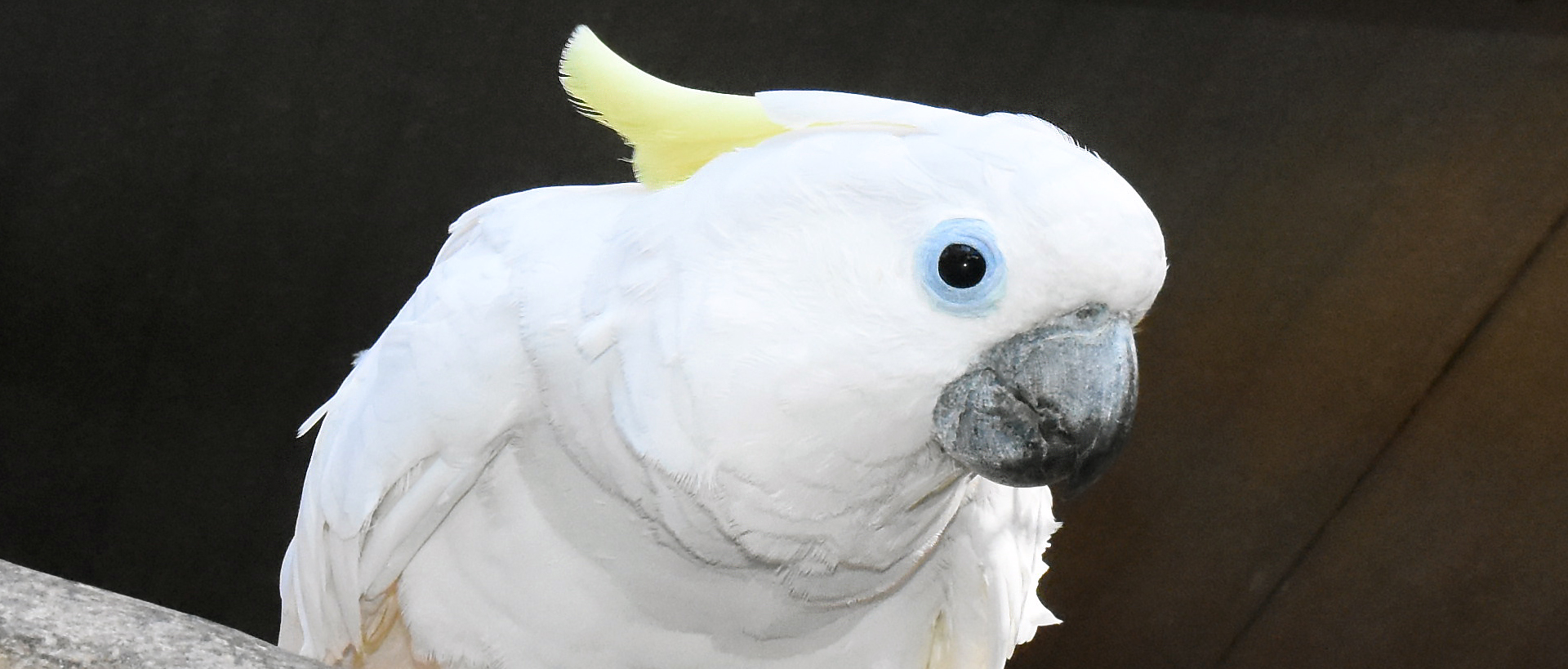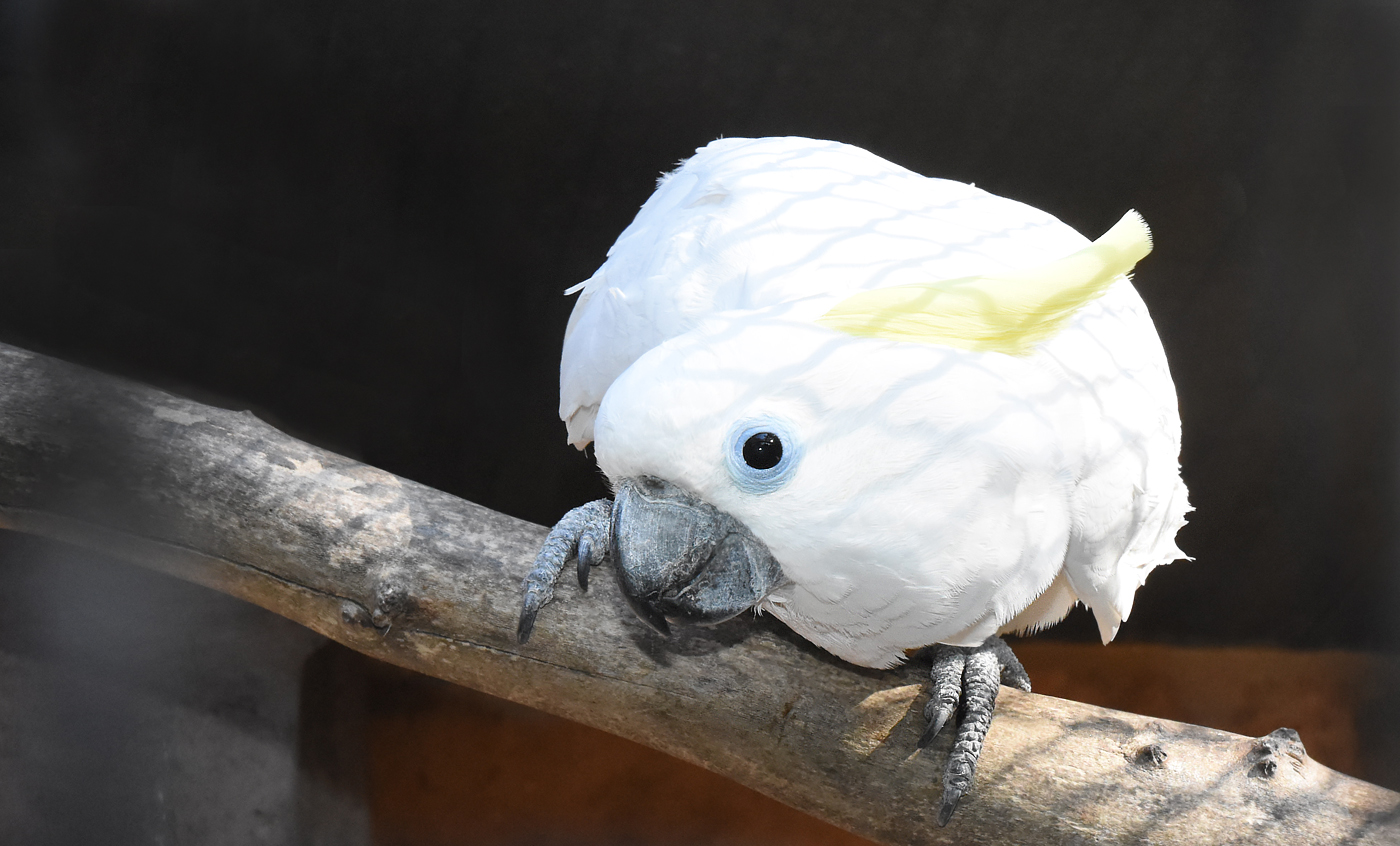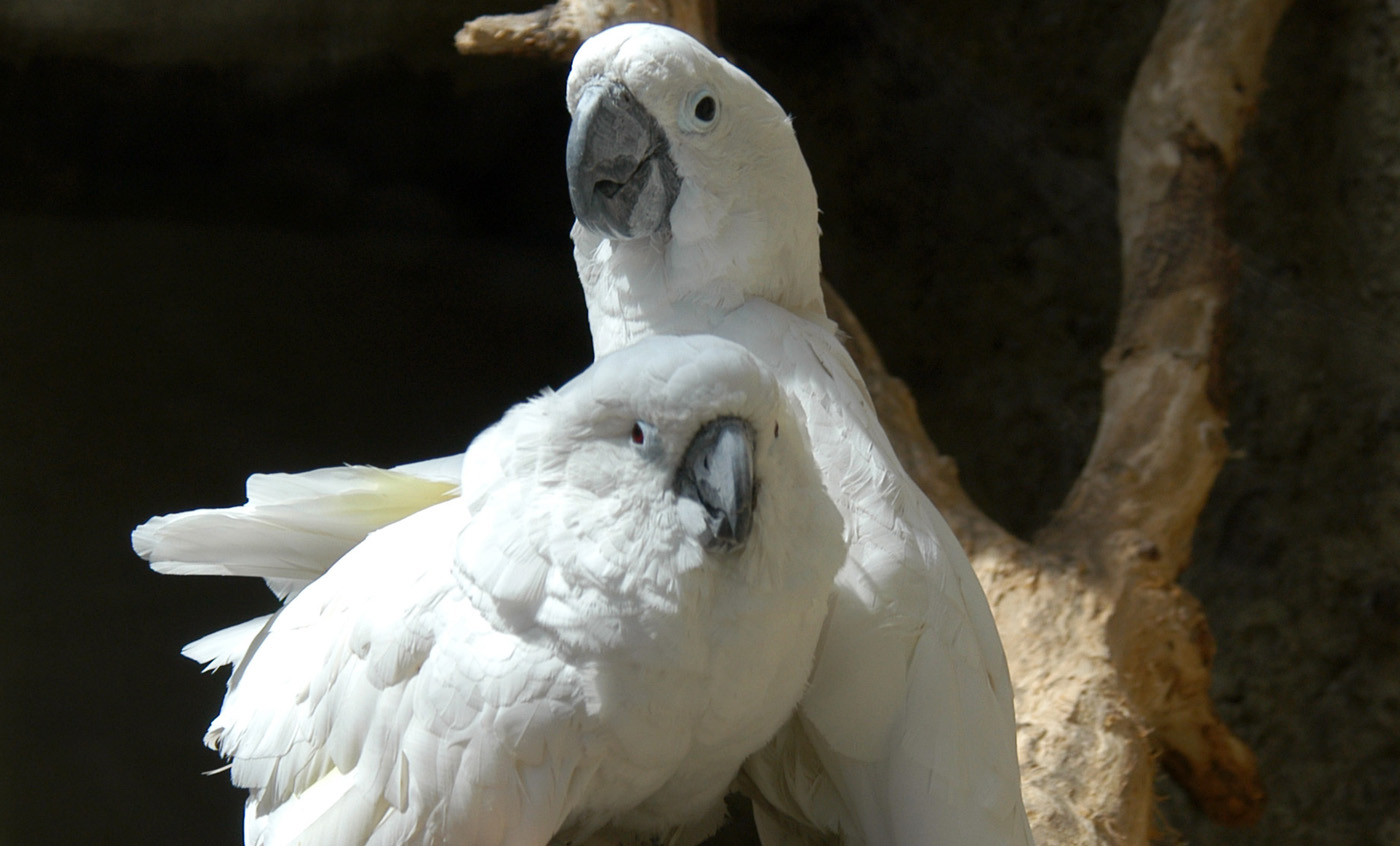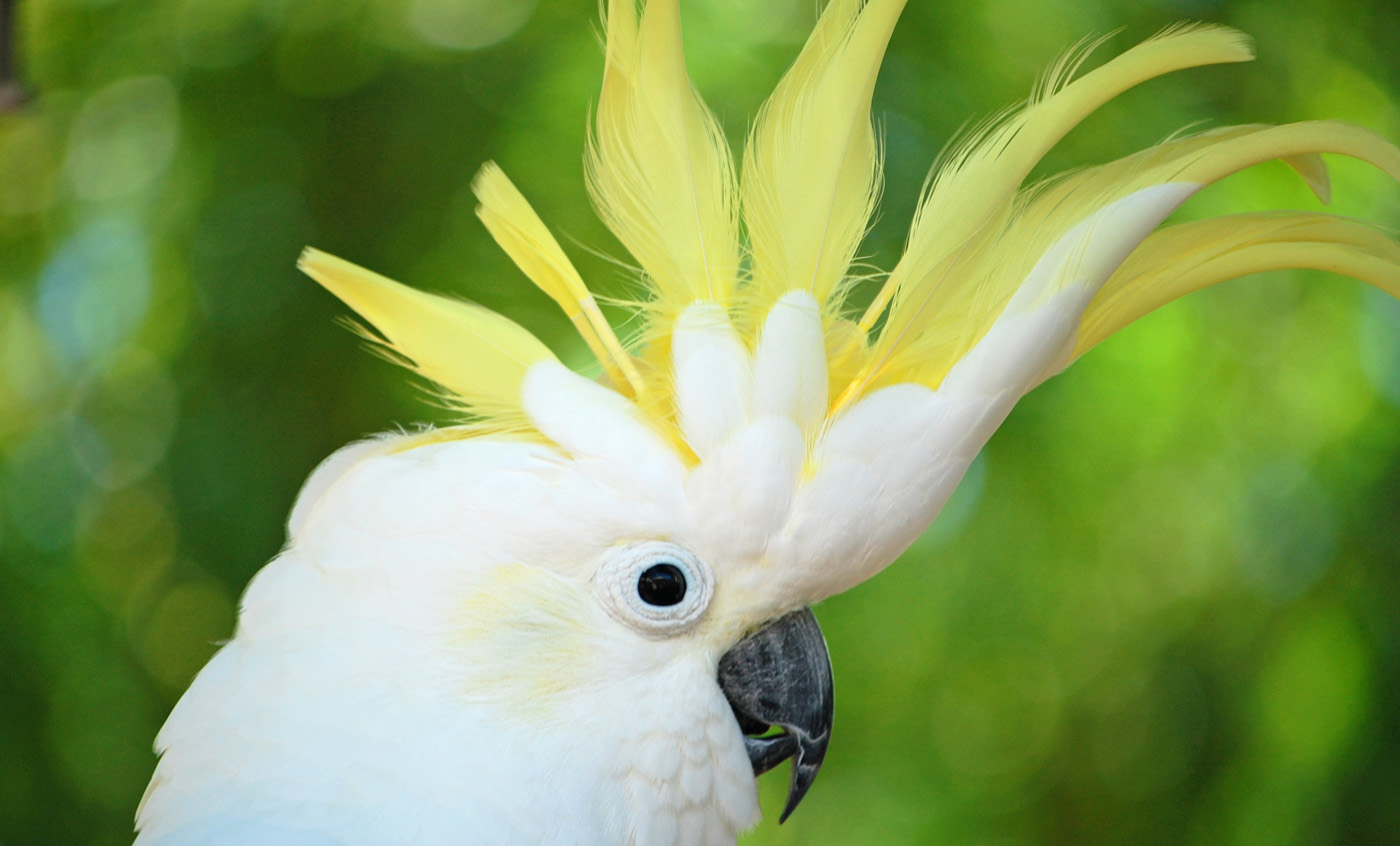Triton sulphur-crested cockatoo
The triton cockatoo is a very adaptable bird found both in the rain forests and in the lowland savannah or agricultural lands of New Guinea and other islands to the north and east.
Outside the breeding season, they form large groups of a strongly social character. When they feed in open spaces, some of the group keep watch at the top of a tree, although this does not occur when they feed inside the forest.
Natural habit
It mainly inhabits primary rainforests, open fields and evergreen forests up to 1400 metres high in New Guinea and Australia.
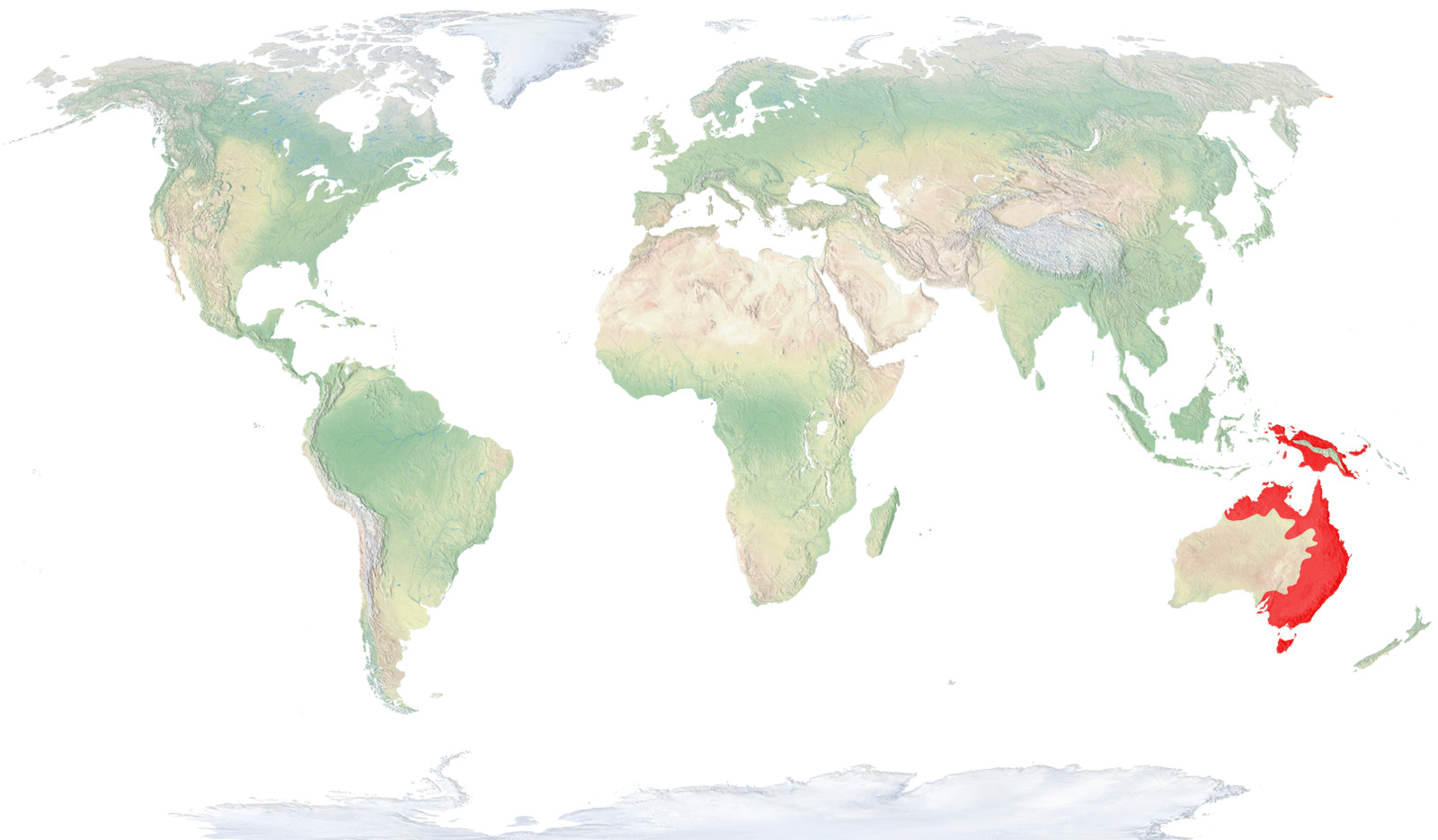
- Distribution / Resident
- Breeding
- Wintering
- Subspecies
Risk level
- Extint
- Extint in the wild
- Critically endangered
- In Danger
- Vulnerable
- Near threatened
- Minor concern
- Insufficient data
- Not evaluated
Taxonomy
Physical characteristics
Biology
Reproduction
Biology
The yellow-crested cockatoo is in the same order as parrots and macaws—Psittaciformes—although it belongs to a family containing all Cacatuas, which are taxonomically very different from other Psittacidae. Its plumage is mainly white, although it has a considerably long yellow crest, which it can raise. Sometimes, and depending on the subspecies, the orbital area, feather free, can be white, blue or greyish.
It mainly inhabits primary rainforests, open fields and evergreen forests up to 1400 metres high in New Guinea and Australia.
It mainly feeds on seeds and fruits, although it can complement this diet with bugs, insects and larvae, which it captures by pecking the ground.
The breeding season runs from August to January in Australia and from May to September in New Guinea. It builds its nest in holes in trees, padding it with plant matter, where it lays two or three eggs that both the male and female incubate for a period of 25 to 27 days. It is decidedly territorial during the breeding period.
Even though it is territorial and solitary during the breeding period, outside this time it can form quite large groups, especially for travel—sometimes many kilometres—searching for food.
It is not endangered, although its loss of habitat and capture for the pet market represent a constant pressure that leads to a constant drop in numbers and could entail the species being in greater danger. In New Guinea, the loss of habitat is starting to be a real problem for island populations.



